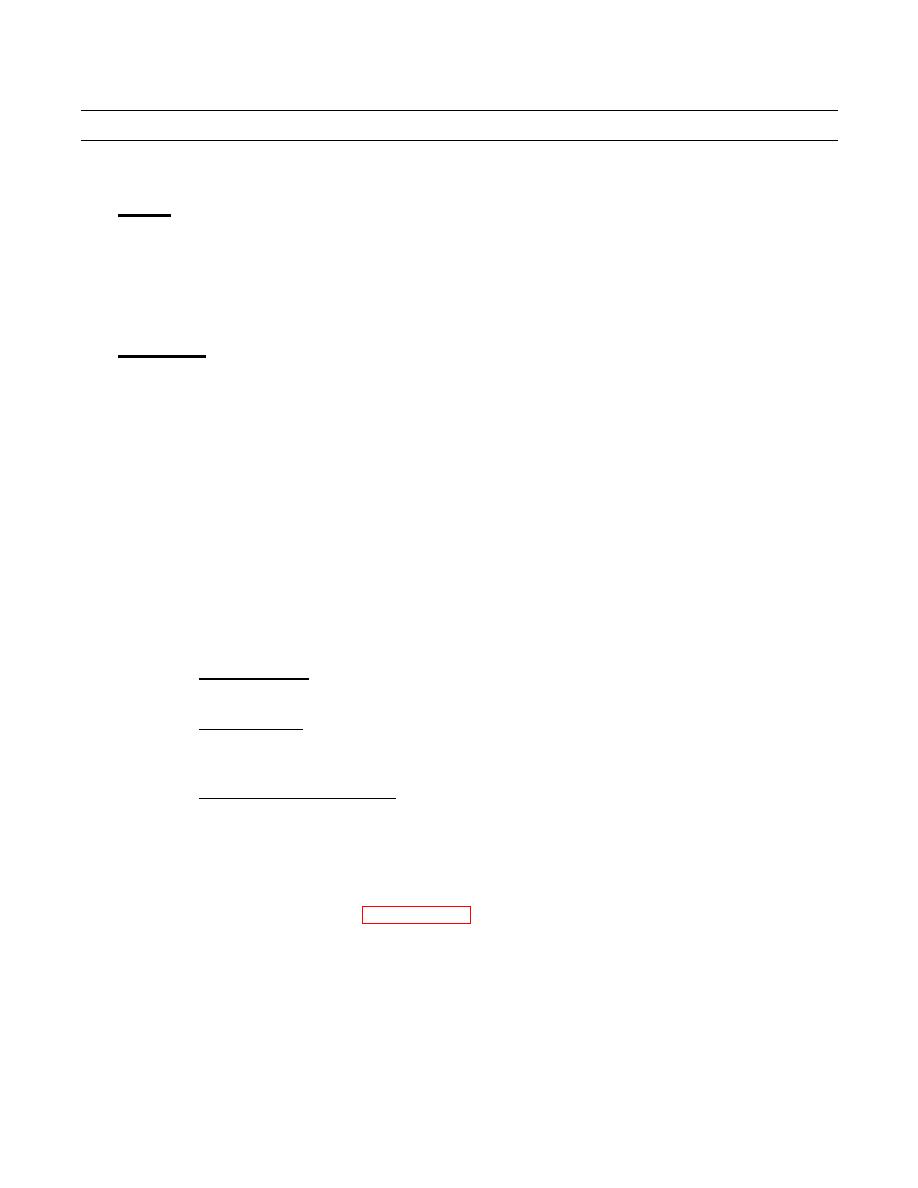 |
|||
|
|
|||
|
|
|||
| ||||||||||
|
|
 TM 9-2320-303-24-2
CAB BODY REPAIR - CONTINUED
0289 00
INSPECTION
1.
General. The damaged area should be thoroughly cleaned and inspected to determine cause and extent of damage. Body
parts should be inspected for holes, cracks, dents, distortion or breaks. Fasteners should be inspected for breaks, stretch-
ing, looseness, cocked heads or hole elongation. Seams, flanges, and joints should be inspected for straightness or local
deformation as an indication that fasteners may have been stretched or holes elongated. It is possible for this to happen
and for fasteners to still appear to be tight in their holes. In addition, make a thorough inspection of adjacent areas to
determine if high loads have been transmitted from the damaged area to other areas. This can result in secondary dam-
age in the form of distorted panels or seams, loosened or sheared fasteners, elongated fastener holes, and cracks.
2.
Classification. After extent of damage has been determined, affected parts should be classified in one of the following
categories:
Negligible Damage
Damage Repairable by Patching
Damage Repairable by Insertion
Damage Necessitating Replacement of Parts
a.
Negligible Damage. Minor dents, nicks, scores, cracks, and holes in body panels which are within or are brought
within reasonable limits by a simple procedure without extensive rework. These defects should be considered more
serious if located in main structural members such as body side rails, a pillar or floor crossmembers rather than in
body panels such as cowls or rear wheelhouses. Deep wrinkles of undetermined origin in body panels should not
be classed as negligible until the source of wrinkles has been investigated and positively identified. Damage other
than small dents, holes, nicks, and scratches will require repair or replacement of the part. Refer to repair of negli-
gible damage below.
Negligible Cracks. Isolated cracks less than 0.50 in (1.27 cm) long may be classified as negligible cracks
(1)
provided they are stop drilled at each end to stop propagation.
Negligible Holes. Isolated holes no more than 0.50 in (1.27 cm) diameter after they are made round with
(2)
smooth edges are classified as negligible holes, provided the distance from the edge of the hole to the near-
est line of rivets exceeds the diameter of the hole.
(3)
Negligible Dents and Distortion. Small dents and distorted areas may be classified as negligible, if they
can be repaired by hammering or bending without causing the material to crack. Heat may not be used for
reforming.
b.
Damage Repairable by Patching. Damage beyond negligible must be repaired or the section replaced. Patches
can often be applied over damaged body panels. Damaged area must first be trimmed to remove sharp edges or
notches that could cause start of new cracks. Patch must then be sized to overlap the area to allow for attaching riv-
ets. Refer to Repair by Patching on page 0289 00-12.
c.
Damage Repairable by Insertion. In certain cases, patch repairs may not be desirable because of impracticality
or because a flush surface is desired. In this case, damaged area must be cut away and a partial replacement of
equivalent material inserted flush with adjacent areas and backed up with a doubler. Refer to Repair by Insertion
on page 0289 00-13.
d.
Damage Necessitating Replacement of Parts. Parts are too badly damaged for repair, or replacement is easier
than repair; repair for welded assemblies such as body mounts. Welded assemblies cannot be rewelded without
destroying their strength and must be replaced.
0289 00-2
|
|
Privacy Statement - Press Release - Copyright Information. - Contact Us |